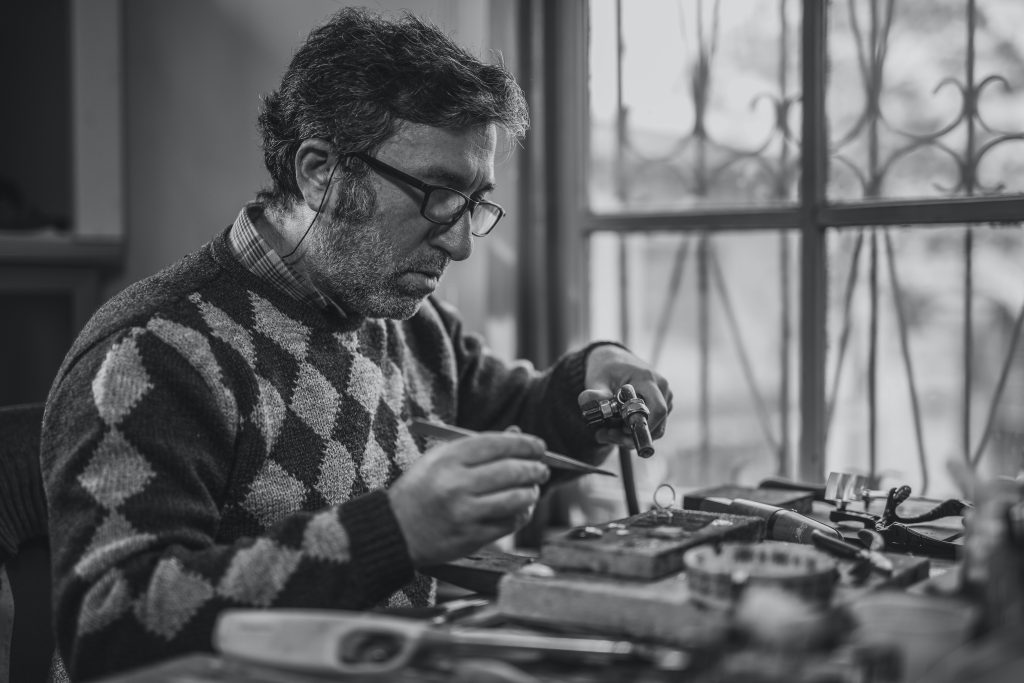Recently, I wrote an article about some of the issues the Australian jewellery industry faces in regard to education and training of jewellers and, in particular, gold and silversmiths. This month I am going to follow up with a more sobering and blunt assessment of the lack of highly skilled workers in our industry. Australia is not alone in having skills shortage issues in jewellery production and many other manufacturing jobs.
I have lived and worked in Germany and that country has a very strong jewellery tradition and skills history. They too have a skills crisis in the sector.
Our industry, like many others, has relied on universities and TAFEs to ‘pump out’ graduates and qualified skilled workers. Make no mistake, there is no compunction for these institutions to skill people for our industry. There is no government legislation or mandatory ideology requiring that institutions do this. My experience over the last three decades teaching both at university and TAFE has taught me that university vice chancellors and TAFE CEOs have chased the dollar trail in education. This has meant that courses of perceived future demand and classes that could be taught in lecture theatres, in computer classrooms (larger size), and of course, online particularly during the pandemic, have had priority. Courses like fine arts and jewellery require, by their nature, specialised and designated work spaces, one on one learning and smaller class groups, not to mention highly skilled tradespeople able to teach! I haven’t yet seen a successful online jewellery hand skills platform anywhere in the world. Maybe I need to reskill myself on Youtube?
I was employed at RMIT in the late 1980s and 1990s as a part time specialist skills teacher in jewellery. Trainees in jewellery need hand skills, right? I was, apparently, wrong. By the end of the 90s, the gold and silversmithing course which had produced dozens of great practitioners over decades such as Ken Gray, Peter Gertler, Tony Kean, Wayne Guest, Debbie Sheezel and many others, had morphed into Object Design. The new course had jewellery as an area of elective specialisation and this required, for the most part, conceptual learning from a teacher with different skills. I was shown the back door of the bus very quickly.
My experience in TAFE was very different. As the jewellery coordinator at Melbourne Polytechnic (then NMIT), half of the jewellery training area was focussed on apprentices of whom 99 percent were indentured. Being indentured meant that students were employed, and they had the reasonable expectations they would go on to be qualified and presumably continue in careers as hand makers of jewellery. I am led to believe that many apprentices attending college in Sydney were not indentured. This was already a problem for the industry. Melbourne Polytechnic has now followed suit and allows apprenticeships for self-funded and non-employed apprentices.
Like many, I think the apprenticeship system needs a complete rethink and overhaul, however, bluntly put, these trainees, who are in ever diminishing numbers, are training for potential employment that may not exist as they graduate. Who is going to invest tens of thousands of dollars in self-funded training for poor career path opportunities? This model of training is the road to extinction.
I mentioned in my last article that laser, CAD and CNC are legitimate new skills that have a place in many industries including ours. But don’t be fooled, they are not traditional hand-skills. If the industry wants highly skilled workers with hand-skills – and I don’t mean people who are good at cleaning up castings at often substantially low pay rates – then a serious conversation has to be had in the jewellery industry on how best to achieve this. It would seem that many forget that CAD, reproduction using rubber moulds and hand carving wax are all based on the casting process and, despite its place in jewellery making, it does not miraculously encourage the acquisition of traditional hand-skills.
The Guild representatives are interested in your experiences and feedback, and look forward to speaking with many of you at the upcoming JIN Trade Fair in Melbourne.
Chris Sherwin
Fellow #5 GSGA
Guild President

Further reading: